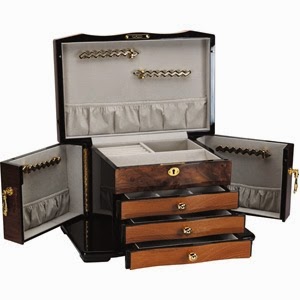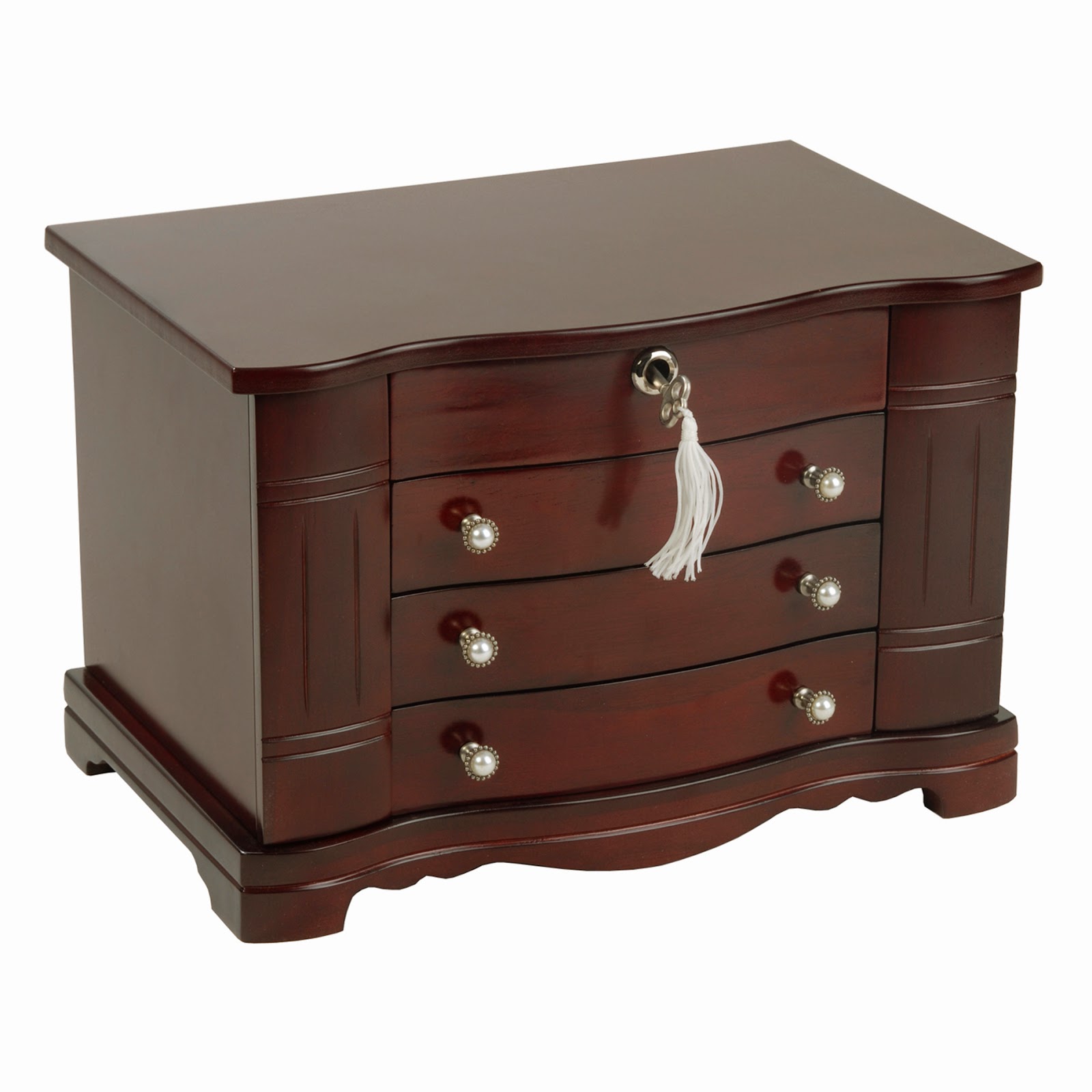 |
| Luxury Desktop Jewelry Box |
Generally speaking, dressing tables are difficult to keep neat and tidy. During the mornings before work, no doubt finding the perfect piece of jewelry causes quite a bit of unnecessary stress. There are, however, plenty of organizational solutions; and you probably won’t even need to fork out any cash on a nice jewellery box.
By following this guide you’ll be able to craft some very original storage devices that not only look great, but are highly functional.
Picture Frame Hanger
The picture frame hanger is perfect if you have a bit of unused wall space that needs jazzing up.
Sift through your attic, basement, or wherever you might find an old picture frame. Remove the backboard so it’s completely empty. Get some packaging string and tie each end to the frame leaving a gap of a few inches between each line. Use drawing pins to keep the string secure.
Hang up your jewellery, but be careful not to overload each string!
Basket Hanger
Image Credit: College FashionThis design is perfect if you don’t actually have a dressing table and regularly prepare yourself sitting on the floor in front of a mirror.
Get an old basket and simply place it on a miniature easel. If you don’t have an easel, lean it against the wall.
The best thing about this jewellery holder is that it’s ready made. Just prop it up and away you go!
Wooden Necklace Holder
Don’t let the picture fool you, you can make this wooden necklace holder as big or small as you like.Just get two flat pieces of wood – balsa wood is great for small bracelet holders – and either glue them together at the base with wood adhesive, or screw them using two right angle pivot hinges.
Cut out a few level slits on either side of the wood so your jewelry can slot into place.
I’ve seen some great examples of these wooden jewelry boxes placed outside in open plan kitchen spaces, such as the ones seen in this case study from Nicholas Anthony.
Coat Hanger Necklace Holder
Image Credit: Brit + Co
You could probably make this coat hanger necklace holder with just a few bits and bobs from around your home.
Get a wooden coat hanger and insert a bunch of hook screws. If you don’t have any in your garage you can pick them up from most DIY stores for just a few pence.
When you’re hanging up your jewellery just make sure that the weight is evenly distributed to prevent the hanger from tilting.
Twig Necklace Holder
Image Credit: Brit + Co
This quick and easy design is ideal if you enjoy frugal living and recycling.
All you need to do is find a nice thick twig, screw in some hooks, and tie a piece of string to either end so you can hang it up.
If you don’t have any hooks you could attach a few drawing pins instead.
In conclusion, jewelry boxes come in many different kinds of designs, from desktop jewelry boxes like the one shown at the very top, to large, standing jewelry cases that act as a piece of furniture, to the unique & chic ones shown here. Whatever your taste, you can make your own, or purchase an heirloom quality one!
Companies mentioned:
College Fashion
Nicholas Anthony
Brit + Co
ChasingTreasure






